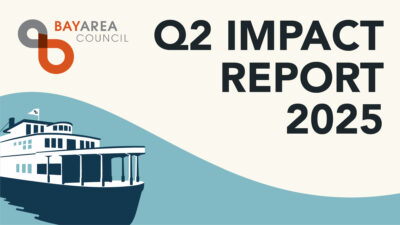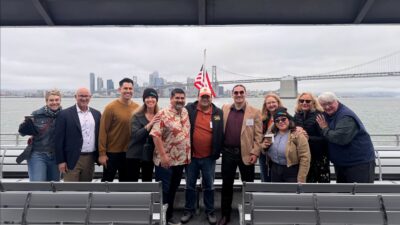Contra Costa Times: People must be made to understand high-speed rail strategy
By Jim Wunderman and Carl Guardino
CONFUSED IS the best way to describe how our two organizations — representing more than 600 Bay Area businesses — felt when we first heard the news that the California High-Speed Rail Authority had chosen Borden to Corcoran as the first high-speed rail segment to be built. After all, the majority of Californians probably only see those towns when they’re looking out the window as they fly up or down the state.
We would have liked to see the first phase started in the Bay Area, but the resistance cast by residents in parts of Northern and Southern California raised enough doubt in the minds of policymakers in Washington that they decided to skip over our region and allocate the funds to the safe choice. While disappointing, that should come as no surprise.
But what everyone who has called this initial route the “Train to Nowhere” is failing to grasp is that the train still needs to start being built somewhere.
Borden to Corcoran may not be ideal, but there are reasons for starting there, mainly, the estimated 80,000 jobs the first segment is expected to create. As recently as October 2010, there were 88,900 unemployed workers residing in the counties that are located along the first phase of construction — and that number doesn’t factor in the time that those Californians have been out of work, and the countless others who are struggling to get by. It’s the reason that some have dubbed the Central Valley, “New Appalachia.”
In the Bay Area, we’re still feeling the effects of the economic downturn as well, but we benefit from living in a part of the state that has historically bounced back faster, with much more prosperity when the boom hits.
The other point to consider is that regardless of where the Central Valley segment had been built, the first phase won’t be carrying trains on it. The $4.15 billion the High-Speed Rail Authority plans to spend will be used for building the stations, acquiring rights of way, constructing viaducts, grading, and re-aligning and relocating roadways, existing railways and utilities — not buying rolling stock.
So those who expected trains to be speeding by on the hour between Merced to Fresno or Fresno to Bakersfield are mistaken. It will happen, just not yet.
As many have pointed out, high-speed rail is akin to the interstate highway system created in the United States in the 1950s. The highways were not created overnight, and when they were created, construction first started in Missouri, not Los Angeles or New York. We need to think of high-speed rail the same way.
Moving forward though, the High-Speed Rail Authority needs to quell the anger and confusion about the project that is spreading across the state, and replace it with the appropriate sense of urgency and excitement that comes with a game-changing project of this type.
This can only happen if the authority better explains the nuances and complexities of high-speed rail to the public and gets buy-in for the overall strategy to bring the project to fruition over the next decade. Included in that should be a firm commitment that the next segment will connect two major California metro areas.
We cannot forget why 53 percent of Californians statewide voted to support and allocate funds for high-speed rail. This project will re-establish our leadership across the nation and around the globe. And it also won’t hurt to provide an environmentally sound alternative to the country’s busiest air route and take nearly 70 million auto trips off the road every year — which is what the statewide high-speed rail network is projected to do.
Above all, we should not let the concerns over this first phase of the project kill high-speed rail in California altogether. As the saying goes, we can’t make perfect the enemy of the good.
Building a project of this size and scope was never going to be easy and there were always going to be difficult choices and bumps in the road.
How we deal with those challenges over the long haul is what will ultimately get high-speed rail built.
This is a marathon, not a sprint.





